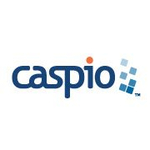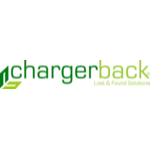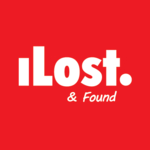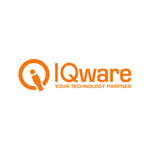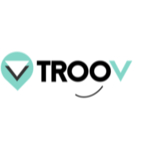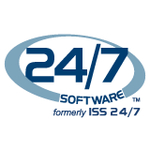TechnologyCounter provides genuine, unbiased real user reviews to help buyers make informed decisions. We may earn a referral fee when you purchase through our links, at no extra cost to you.
List of Best Lost And Found Software
Showing 1 - 10 of 10 productsthe Lost Property Desk, your one-stop solution for all things lost and found. With our advanced software, we strive to help you efficiently manage and locate your lost possessions. Our user-friendly interface database make the process seamless, allow...Read Lost Property Desk Reviews
RepoApp is a platform that simplifies the process of managing repositories for developers. With its user-friendly interface features, RepoApp streamlines collaboration and version control, making it the go-to solution for modern software development...Read RepoApp Reviews
Caspio is an all-in-one low-code platform that empowers businesses of all sizes to create custom web-based applications without coding. With powerful features such as drag-and-drop interface, robust reporting, and scalability, Caspio simplifies the p...Read Caspio Reviews
Chargerback is a lost and found recovery software that streamlines the process of retrieving lost items. With its user-friendly interface technology, Chargerback sets a new standard for efficiency and convenience in lost and found management. Say goo...Read Chargerback Reviews
iLost is a solution for all your lost items. This innovative software is designed to help you track and locate your valuables, making the frustrating experience of losing items a thing of the past. With its user-friendly interface technology, iLost o...Read iLost Reviews
IQware PMS is a top-of-the-line property management system designed to streamline operations and enhance guest experiences. Its advanced features and user-friendly interface make it the perfect solution for hotels of all sizes. With IQware PMS, hotel...Read IQware PMS Reviews
Troov is a travel planning tool that simplifies the process of organizing and booking your dream vacation. With Troov, you can easily search for flights and accommodations, compare prices, and create detailed itineraries - all from one convenient pla...Read Troov Reviews
Pixit L&F is a solution for all your graphic design needs. This innovative software allows you to bring your ideas to life with its user-friendly interface and powerful tools. Created for artists, designers, and businesses alike, Pixit L&F is the per...Read Pixit L&F Reviews
getsteroo Lost & Found is a solution for managing lost and found items. With its advanced features and user-friendly interface, getsteroo simplifies the process of tracking and reuniting lost items with their owners. Say goodbye to the hassle and con...Read getsteroo Lost & Found Reviews
24/7 Lost & Found is a software solution designed to simplify the process of locating lost items. With its user-friendly interface technology, this software ensures a hassle-free experience for both users and administrators. Say goodbye to misplacing...Read 24/7 Lost & Found Reviews
- What Is Lost and Found Software?
- Top Reasons Why Businesses Need Lost and Found Software?
- What Are the Top Key Features of Lost and Found Software?
- What Are the Top Benefits of Lost and Found Software?
- What Are the Steps to Choose the Right Lost and Found Software?
- What Are the Types of Lost and Found Software for Different Industries?
- What Are the Technology Trends for Best Lost and Found Software?
- What Are the Deployment Options for Lost and Found Software?
What Is Lost and Found Software?
Lost and Found software refers to a specific kind of system designed to assist organizations in effectively managing and monitoring lost and found things. The software application facilitates the efficient identification of the rightful owner of a misplaced item, hence enabling its prompt and successful return.
The operational mechanism of Lost and Found software often involves inputting the item's description, date of loss, and the specific location where it was misplaced into the software application.
The aforementioned data is thereafter saved within the system and may be retrieved at any given moment, hence facilitating the staff's ability to promptly find any misplaced things and subsequently restore them to their proper owners.
The lost & found software can additionally serve as a tool for monitoring and tracing things that have been reported as stolen, facilitating the process of reporting such incidents to the relevant authorities.
The best lost and found software systems seem to be particularly advantageous for institutions that have regular occurrences of misplacement and retrieval of things, such as airports, railway stations, public transit facilities, or educational institutions.
Top Reasons Why Businesses Need Lost and Found Software?
1. Increased accountability: Lost and found software facilitates the process of monitoring and tracing misplaced objects, so assuring their prompt identification and subsequent return to their proper owner.
2. Streamlined process: The implementation of lost & found software offers organizations an effective option to expedite the process of documenting and arranging misplaced objects, hence eliminating the need for a laborious manual approach.
3. Enhanced customer service: Businesses can exhibit their dedication to customer satisfaction by offering a convenient and dependable method for clients to retrieve misplaced belongings.
4. Improved security: The implementation of a comprehensive digital record system for lost objects enables organizations to effectively mitigate the risk of these products being utilized for nefarious purposes or unlawfully removed from the premises.
5. Increased visibility: By utilizing an automated system, organizations can efficiently and expeditiously obtain a comprehensive picture of all misplaced products, enabling them to reclaim those items in a more prompt manner compared to previous methods.
6. Streamlined reporting: The best lost and found software possesses the capability to automate the generation of reports, so enabling businesses to effectively monitor activities, conduct audits of the process, and promptly undertake necessary actions as deemed necessary.
7. Automated notifications: The software possesses the capability to autonomously dispatch notifications upon the discovery of a misplaced object, hence expediting its prompt return to its lawful possessor.
8. Efficient record keeping: The management of all records is efficiently carried out through a centralized database, hence eliminating the need for manual data entry by workers into spreadsheets or logbooks.
9. Automated warnings: The implementation of lost and found software facilitates the issuance of automatic alerts, thereby assisting personnel in effectively ensuring the prompt return of things.
10. Reduced cost: The implementation of automated systems for managing lost and found items in enterprises can result in cost savings by minimizing the requirement for additional personnel to supervise the process.
11. Easier search capabilities: The implementation of a consolidated lost and found database significantly improves search capabilities, enabling staff members to efficiently identify and recover misplaced items.
12. Improved tracking: The utilization of a lost & found software system has the potential to enhance the precision and efficacy of lost item tracking and customer notification.
13. Reduced risk of misplacing items: Increased tracking and alarm capabilities can provide organizations with significant advantages, since they aid in mitigating the risk of lost things being misplaced or forgotten.
14. Reduced paperwork: The implementation of the best lost and found software streamlines the labor-intensive manual procedures involved in maintaining physical lost and found records, leading to improved operational effectiveness and precision.
15. Improved customer experience: By implementing a robust lost and found system, organizations have the potential to enhance customer experience, foster customer loyalty, and mitigate consumer aggravation.
What Are the Top Key Features of Lost and Found Software?
The top Key features of Lost and Found software are as follows:
1. Reporting: The program facilitates the functionality of reporting lost or discovered objects, making announcements, and registering items.
2. Tracking: The software provides the capability to monitor and ascertain the status of lost and found objects.
3. Search: The capacity to conduct searches for misplaced or recovered things within the system.
4. Database Management: The system possesses the capability to retain a comprehensive database of lost and found goods, facilitating efficient tracking and retrieval processes.
5. Notification: The capacity to transmit messages to individuals who have registered or expressed interest, pertaining to misplaced objects or important announcements.
6. Security: It is imperative to provide a mechanism that enables exclusive ownership verification by the legitimate possessor of a misplaced object in order to facilitate the process of reclaiming said item.
7. Location Tracking: The capacity to monitor the geographic coordinates of a misplaced object in order to facilitate its prompt retrieval.
8. Storage: The capacity to securely retain comprehensive records of all transactions pertaining to the lost and found database.
9. Collection: The capacity to get data from individuals when they submit reports regarding misplaced belongings.
10. Analytics: The capacity to produce reports and analytics derived from the lost and found database.
What Are the Top Benefits of Lost and Found Software?
1. Improved Efficiency: The utilization of top lost and found software facilitates the effective management of the procedure involved in tracking and retrieving misplaced objects, hence obviating the necessity for manual search efforts. This practice has the potential to optimize time management and expedite the retrieval process for locating misplaced items.
2. Enhanced Security: The utilization of lost & found software facilitates the effective management of the procedure involved in tracking and retrieving misplaced objects, hence obviating the necessity for manual search efforts. This practice has the potential to optimize time management and expedite the retrieval process for locating misplaced items.
3. Increased Accountability: The utilization of top lost and found software facilitates the allocation of accountability for an object, thereby guaranteeing the systematic monitoring of all reports and lost things. This facilitates the establishment of individual responsibility for the objects under their control.
4. Improved Visibility: The utilization of the best lost and found software can enhance the level of visibility pertaining to the whereabouts of various goods, enabling the user to ascertain the most recent sighting of a lost item as well as its present position. This has the potential to significantly enhance the likelihood of successful recovery.
5. Multiple-Device Accessibility: Lost and found software facilitates data accessibility across many devices, encompassing cellphones, tablets, and PCs. This feature enables users to conveniently and expeditiously retrieve data from any location.
6. Automated Notifications: Relevant users are promptly notified through notifications in order to provide them with timely information regarding the location of a reported item. This feature facilitates the expeditious dissemination of updates pertaining to the current whereabouts of a misplaced object.
7. Fewer False Reports: The utilization of top lost and found software has the potential to mitigate the occurrence of erroneous reports by granting users the capability to classify objects within the database. This feature facilitates the process of ensuring that only legitimate reports are being sent.
What Are the Steps to Choose the Right Lost and Found Software?
1. Establish your budget: Establish the financial parameters within which you are prepared and capable of allocating towards the procurement of a the best lost and found software solution. This approach will facilitate the process of refining your search and directing your attention towards solutions that align with your financial constraints.
2. Identify your needs: The identification of the requisite features and functionality of the program is crucial. When evaluating a system, it is important to take into account many factors such as ease-of-use, security, scalability, customizability, and data storage and retrieval requirements.
3. Research options: Conduct a comprehensive investigation into various software options that are currently accessible for the purpose of lost and found administration, and then ascertain which ones align most suitably with your specific requirements. Examine customer reviews in order to acquire insights into the experiences of individuals with these vendors.
4. Contact vendors: It is advisable to establish communication with suppliers in order to acquire comprehensive knowledge on their range of products and services, as well as their pricing models, customer support provisions, and training and implementation assistance.
5. Test drive: It is recommended to download or engage in a trial period of the software in order to verify its functionality as advertised and ascertain its compatibility with your specific requirements.
6. Make the purchase: Proceed with the purchase and initiate the implementation and training procedures. It is imperative to ensure that the staff members are adequately taught in the effective utilization of the program.
7. Monitor performance: It is advisable to consistently assess the performance of your program in order to detect any shortcomings or opportunities for enhancement. Make use of customer service and support services as required.
What Are the Types of Lost and Found Software for Different Industries?
1. Retail Lost and Found Software: This type of found software is designed specifically for retail businesses. It allows retailers to track lost/found items and quickly reunite customers with their lost items. The software can be integrated with store databases, so customers can easily search and locate their missing items.
2. Hospitality Lost and Found Software: This software helps hotels and restaurants to manage their lost and found items. This type of software allows customers to easily search and locate their lost items. It also can help store and track items for future reference.
3. Tourism Lost and Found Software: This software is designed for tour operators, travel agents, and visitors’ centers. It helps operators keep track of lost items and quickly reunite owners with their lost items. It can also be used to track items for future reference.
4. Transportation Lost and Found Software: This software helps transportation companies, such as airlines, trains, buses, and taxis, to manage their lost and found departments. This type of software makes it easy for customers to search and locate their lost items. It also helps store and track any found items for future reference.
5. Education Lost and Found Software: This type of software helps educational institutions, such as universities and schools, to manage their lost and found departments. The software can be used to record and monitor items and reunite owners with their lost items in an efficient manner. It also helps store and track items for future reference.
What Are the Technology Trends for Best Lost and Found Software?
The following are the technology trends for best Lost and Found Software:
1. Cloud-based Solutions: The utilization of cloud-based software for lost and found systems is experiencing a growing trend in popularity. Cloud-based solutions facilitate seamless information interchange and provide customers with safe storage capabilities, enabling them to access data from any geographical location.
Cloud-based systems offer several advantages to companies, including cost and time savings, as well as enhanced data security, by enabling secure access to their data.
2. Innovative Reporting Tools: Numerous enterprises are currently in pursuit of Lost and Found Software equipped with integrated reporting capabilities. The aforementioned reporting tools provide useful insights pertaining to the present state of inventory, historical records of lost items, quantity of things, and other relevant information.
This facilitates the process for firms to effectively monitor lost and found items, and identify the most suitable resolution for their present requirements.
3. Automation: The prevalence of automation is increasing in lost and found systems and software. The implementation of automation facilitates enhanced operational efficiency, heightened precision, and increased process management capabilities.
The implementation of automation technology enables firms to efficiently and expeditiously detect and retrieve misplaced things, resulting in cost and time savings.
4. Mobile Applications: The utilization of mobile applications for the management of lost and found items is experiencing a surge in popularity. Mobile applications enable users to efficiently scan an item and afterwards document it as either lost or found.
This facilitates the ability of firms to monitor and oversee the movement of objects, as well as effectively administer lost and found procedures.
5. Artificial Intelligence (AI): The utilization of artificial intelligence (AI) is progressively gaining significance in the realm of lost and found item management. Artificial intelligence (AI) has the potential to expedite the identification and matching of misplaced goods, while also providing valuable data insights.
Artificial intelligence (AI) has the potential to enhance the efficiency and accuracy of the process of matching and returning lost things by automating it.
What Are the Deployment Options for Lost and Found Software?
When implementing Lost and Found software, multiple options are at one's disposal. The subsequent options represent the prevailing deployment alternatives.
1. On-Premise Deployment: This pertains to the act of deploying the software on privately owned physical servers that are situated within the confines of one's own premises. This approach provides optimal system control and security; but, its implementation may need significant labor and incur higher costs.
2. Cloud-Based Deployment: This pertains to the act of deploying the program on the infrastructure of a cloud provider. This approach facilitates cost reduction in relation to tangible equipment and mitigates the need for extensive upkeep.
One potential drawback is that the level of security provided by a cloud-based deployment may be lower compared to an on-premise deployment.
3. Software-as-a-Service (SaaS): The deployment and management of the system in the cloud is conducted by the software provider at this location. Typically, opting for this approach is characterized by its simplicity and cost-effectiveness, albeit necessitating reliance on a third-party vendor for data management.
4. Hybrid Deployment: The deployment in question is a hybrid model that incorporates both on-premise and cloud-based components. This approach facilitates optimal adaptability and expandability, albeit necessitating the integration of the two systems, which can entail intricate and expensive procedures.


